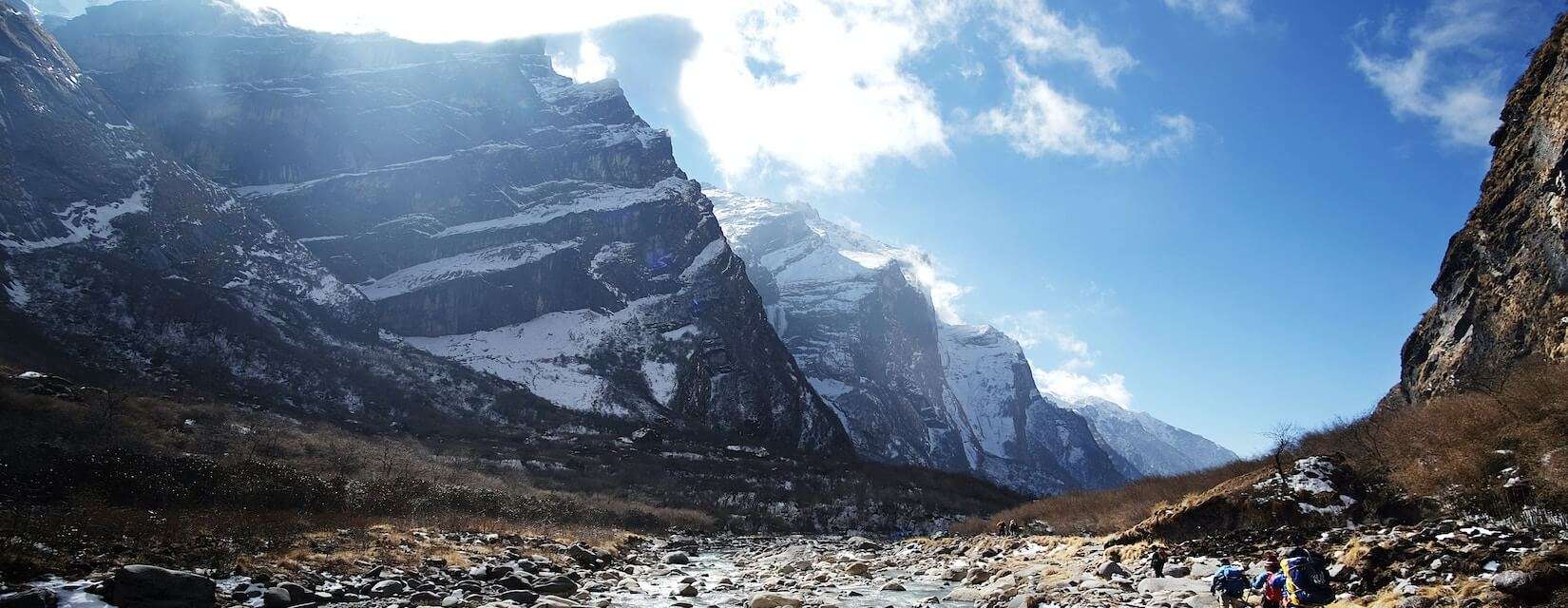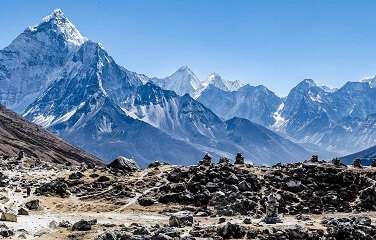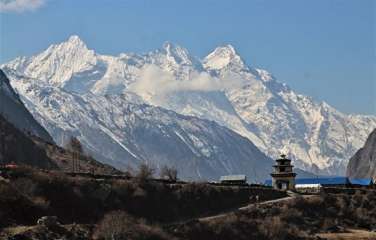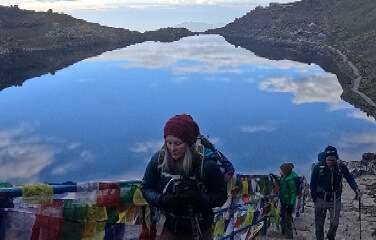Physical Fitness:

A typical degree of physical fitness is required for the Annapurna Base Camp Trek. Depending on your trek itinerary, you may have to walk for a maximum of 7 hours daily and 4-6 hours each. The majority of the trail's stone footpaths are uphill with certain areas having stairs. You will frequently stroll past picturesque villages and lush jungles while taking in stunning mountain views. This trek's highest point is about 4,130 meters (13,550 feet) above sea level.
If you are not in good physical condition, the thin air at this altitude may be a bit difficult. So, engaging in a lot of cardiovascular exercises is the greatest method to get ready for a trek to Annapurna Base Camp. Long-distance running, swimming, or other endurance sports will put you in a strong position to complete the trek. Despite the mild difficulty of the trek, physical fitness is required.
Annapurna Base Camp Trekking Grade
Trek route grades are determined by trek difficulty. The maximum height you will experience when trekking to Annapurna Base Camp is 4130 meters. Despite the numerous challenges, the walk is still of moderate difficulty. It is not very demanding. If you are physically fit, you can participate in the trek. You need both self-confidence and patience. The journey takes more than one day. During the ABC and Poon Hill trek, you must walk for 5 to 6 hours every day.
The trekking route varies throughout the journey. There are times when you have to negotiate some rocky, steep terrain. Additionally, crossing the stone stairs is not so simple. Although there are no hard climbs on the walk, there are still a few things to think about. The walk is not too difficult, though, if you are in good physical shape and have a strong outlook. The journey is fun.
Annapurna Region-related package
- Annapurna Circuit Trek
- Tilicho Lake Trek
- Annapurna Sanctuary Trek
- Nar Phu Valley Trek
- Mardi Himal Trek
Altitude Training

The risk of acute mountain sickness (AMS) must be taken into account if you wish to hike to Annapurna Base Camp. Since you'll be trekking across hills and other difficult terrain in addition to level ground. Therefore, including altitude training along with aerobic and strength training in your preparatory program is equally crucial. While it is hard to train for actual altitude, you can simulate training. Simply ascend the steps as quickly and forcefully as you can, then descend them slowly.
Make careful to wear a backpack when doing this if you want to simulate trekking more accurately. Even if you are physically fit, altitude sickness might still impact you. It all depends on how well your body will adapt to the lack of oxygen. You can thus adhere to one cardinal guideline, which is to never continue ascending if you exhibit any AMS symptoms. You must descend if the symptoms worsen. The most crucial thing to remember is to stay hydrated.
Mental preparation

Trekking is an enjoyable way to spend time. It can be taxing, but, at the same time. As you might run into blisters, unexpected downpours, malfunctioning equipment, and freezing conditions. You may encounter these difficulties on the trail. You must dig deep within yourself to locate a source of strength at this point. Even in the most dire circumstances, giving up seems so simple and straightforward, but it's really just your mind tricking you into believing so. Due to your extensive preparation, your body may be in good shape for the majority of your walk, but your mind tends to be restless.
The most pleasant thing to do in this kind of situation is to push yourself, and you'll eventually discover your success! Therefore, it's wise to psychologically get ready for whatever is likely to cross your trekking route. However, you shouldn't exert any tension because that would just make the situation worse. You ought to be conscious of your options. Learn about the trails, be aware of any hazards, and be prepared to handle them. You can do this by reading hiking blogs, buying books, and speaking with other seasoned hikers.
Therefore, it's crucial to emotionally and physically prepare yourself. Your mental and physical fitness will be put to the test by the challenging terrain. Therefore, get ready by maintaining a positive outlook and being in good physical shape. In fact, doing so will guarantee that you are prepared to take in all the region's wonders.
How do you Start Preparing for This Trek?
Over 2,500m/8,200 feet is when you begin your ascent. With 30% less oxygen than sea level flowing through your bloodstream and muscles, this elevation is considerable. On our schedule, you must hike for seven days before arriving at the 4,130m/13,550 foot Annapurna Base Camp. You have to trek a long distance back after an excellent experience. Long distances must be hiked to return to Jhinu Hot Springs. The distance from Pokhara to the Annapurna base camp and back is more than 60 kilometers.
You must exercise and prepare your muscles before traveling to the Himalayas if you want your body to be able to cross this distance in this environment. This muscle training or muscle memory needs to be ingrained in your body. Prior to the trek, this training is required.
Few Tips for Annapurna Base Camp Trek

Here are a few tips that might be helpful during Annapurna Base Camp Trek.
- With the exception of meat, you are welcome to take seconds and thirds for free when ordering a Nepali or Dal Bhat tarkari meal set. eat anything you want.
- Bring enough cash with you because there are no ATMs on the ABC path.
- Set aside $150 to cover the transportation costs and entry costs to the monastery and the museum.
- As one more day might be required to acclimate, add a few days to account for contingencies. You could also wish to find another place.
- Not all locals can be relied upon. In general, there could be evil people anywhere. Imagine that when you ask someone how far Place A is, they reply that you must travel there in order to stay at their tea house. Everybody is different in some ways. Most people are friendly and helpful.
- If the pricey equipment won't be used again, renting is a better option than buying.
- The public expression of affection is not acceptable, and wearing skimpy clothing will bring unwanted attention to you.
- Clicking individuals without their knowledge is impolite. Ask them beforehand if it's okay to take their picture.
- Food may require a bit more time to prepare. Place your order early.
- Take suitable precautions to prevent AMS and altitude sickness.
Annapurna Base Camp Trekking Trail
The trek to Annapurna Base Camp is not as challenging as other Himalayan trails. However, there are several switchbacks, ups and downs, jagged boulders, and steep stone steps, which may increase the difficulty of reaching Annapurna Base Camp. Although no specific degree of fitness is required for this trek, you should at the very least be in good shape and have strong stamina to complete the fairly challenging hiking trail. The trekkers will undoubtedly become exhausted after traversing more than 3300 stone steps and a significant distance each day.
Annapurna Base Camp to Machhapuchre Base Camp Route

You should always be conscious of your physical strength in order to reduce the risks connected with hiking paths. Avoid pushing yourself too hard because doing so will simply make the trip more difficult. We advise you to go slowly and to always have a companion by your side, such as an Annapurna Base Camp guide, who can offer advice on how to navigate a challenging route safely. You should also always drink enough of water, eat a healthy diet, increase your energy, and carry some energy boosters.
Best time to trek
September and October are the ideal months to hike to the Annapurna Base Camp, followed closely by April and May. The best and most suggested month to go trekking in Nepal in September or October, which falls during the native autumn season. It is the ideal time of year for excellent views of the stunning mountains and surroundings.
April and May are considered the best months for trekking because they offer the best views of the lush green forests and rhododendron in full bloom along the route to Annapurna Base Camp (ABC).
Trekking Gear or Trekking Equipment Required
One of the most crucial decisions is what to bring on the hike. Having the wrong equipment might be problematic. Health problems could result, and it might even ruin your expedition. Here is a rough list of items you should pack for your trek to Annapurna Base Camp.
- A lightweight trekking boots
- A pair of slippers
- Four pairs of liner socks.
- Few pairs of underwear.
- A high-quality ultralight down jacket and a down pant
- T-shirts and trousers
- A set of thermals
- A light sleeping bag
- A trekking pole
- Two pairs of Gloves. (One for warm weather and one for the cold)
- A woolen hat
- Sunglasses
- A torchlight or a head torchlight
- A First aid kit including Diamox and Oral Rehydration Salts (ORS)
- Toiletries– (Toilet paper, hand sanitizer, water purifiers, sunscreen, moisturizer, toothbrush, and toothpaste).
- A waterproof map of Annapurna Base Camp
- Snacks you like and entertainment such as books, cards, an iPad, etc.
HOW FIT SHOULD I BE TO TREK ANNAPURNA BASE CAMP?
It's important to be physically healthy before you leave if you want to fully enjoy the excursion. You'll have more fun if you're more physically fit! Although it is not a difficult climb, there are some areas where it is fairly steep and you will gain height very quickly. It will likely be the most difficult physical test in many people's lives.
HOW SHOULD I TRAIN FOR ANNAPURNA BASE CAMP?

The ideal approach combines physical activity with hillwalking. In this way, you will be accustomed to spending long days trekking and will also have a high basic level of fitness.
Popular Package in Nepal





